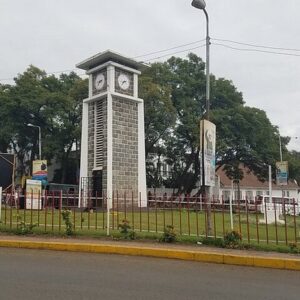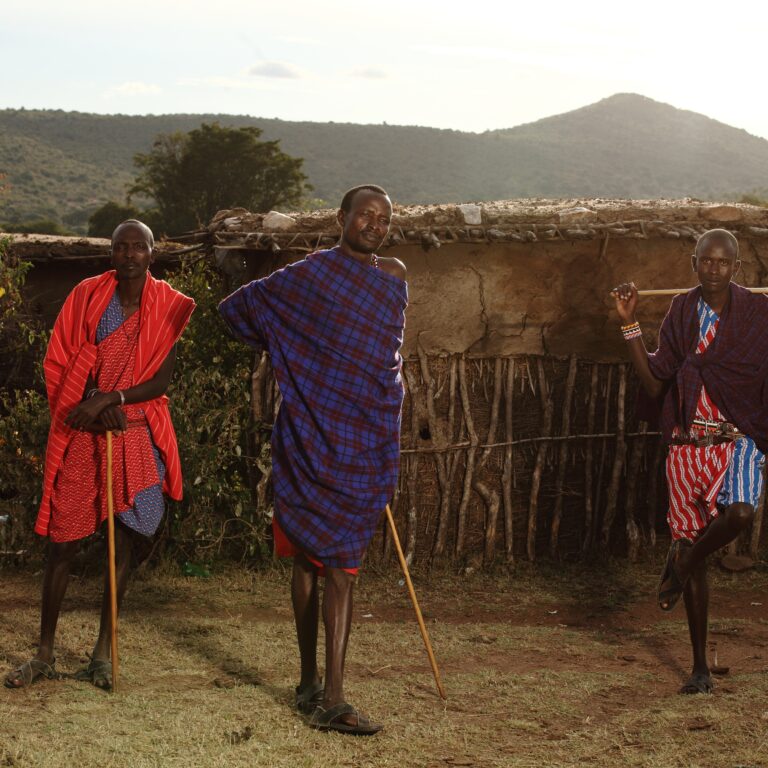Mount Kilimanjaro, Africa’s majestic “Roof of Africa,” stands as a beacon of natural grandeur and a testament to the Earth’s immense geological power. This iconic peak, crowned with rapidly receding glaciers, holds a profound volcanic history that sparks a recurring question: When was Mount Kilimanjaro’s last eruption, and will this sleeping giant awaken again? Mount Kilimanjaro’s last major eruption occurred approximately 360,000 years ago, with the most recent volcanic activity, including minor eruptions, estimated around 200,000 years ago. While Kilimanjaro’s Kibo cone is classified as dormant, meaning it has the potential to erupt again, there are no current signs of imminent volcanic activity, and scientists do not expect an eruption in the foreseeable future.
Will Mount Kilimanjaro erupt again?
While the possibility of a future eruption exists because it is considered a dormant volcano, the likelihood of an eruption in the near future is considered very low. Scientists monitor the volcano and have found no major seismic activity or magma movement that would indicate an impending eruption. The other two cones, Mawenzi and Shira, are considered extinct and are not expected to erupt again. The primary risks for those climbing Mount Kilimanjaro are altitude sickness and challenging terrain, rather than volcanic dangers.
The Volcanic History of Kilimanjaro: A Trio of Peaks
Kilimanjaro isn’t a single volcano but a colossal stratovolcano composed of three distinct cones: Shira, Mawenzi, and Kibo. Therefore, while Mount Kilimanjaro’s last major eruption was hundreds of thousands of years ago, Kibo is considered a dormant volcano, not extinct. This means it has the potential to erupt again, though not in the foreseeable future. Each has played a role in the mountain’s fiery past:
Shira. The oldest of the three, Shira began its formation approximately 750,000 years ago. After centuries of intense activity, it became extinct around 500,000 years ago, leaving behind the stunning Shira Plateau.
Mawenzi. Volcanic activity resumed about one million years ago, east of Shira, giving birth to Mawenzi. This rugged peak went dormant approximately 450,000 years ago and has been significantly eroded over time, showcasing dramatic rock walls.
Kibo. The youngest and highest of the three, Kibo is the one that climbers aim for to reach Uhuru Peak. Its formation involved multiple eruptions over hundreds of thousands of years, with its last major eruption occurring an estimated 150,000 to 200,000 years ago. While some sources mention activity as recent as 200 years ago, scientific evidence primarily points to the formation of the inner Reusch Crater during this more recent period, rather than a full-scale eruption. This “activity” likely involved internal collapses and the release of gases.
Is Mount Kilimanjaro Going to Erupt Again?
The direct answer is: not anytime soon, according to current scientific understanding. While Kibo remains dormant, there are no indications of an imminent eruption. Seismic activity is minimal, and the magma beneath the mountain has been cooling for a considerable period. The faint sulfur smell observed at the summit is attributed to volcanic gases escaping from fumaroles (vents) within the Reusch Crater, a common feature of dormant volcanoes and not a sign of an impending eruption. Before climbing Kilimanjaro, Africa’s highest peak, it’s crucial to understand that it’s a physically demanding trek that requires thorough preparation, including physical fitness, proper gear, and an awareness of altitude sickness.
Monitoring Kilimanjaro: Modern Scientific Efforts
Despite the low immediate risk, scientists diligently monitor Kilimanjaro’s condition. While the primary focus of some research on Kilimanjaro is the alarming retreat of its glaciers due to climate change, geological monitoring is also in place. Modern scientific efforts to monitor Mount Kilimanjaro focus on understanding its volcanic activity, the dramatic retreat of its glaciers, and the broader environmental changes impacting the region. Scientists employ advanced technologies like seismometers to detect tremors and gas analyzers to monitor volcanic emissions, while remote sensing equipment and satellite data are crucial for tracking glacial melt and land use changes. This involves:
Seismic activity monitoring. Detecting any small earthquakes that could indicate magma movement. Gas emissions analysis. Tracking changes in the type and volume of gases released from fumaroles. Ground deformation measurements. Observing any swelling or sinking of the ground, which could signal magma accumulation. These efforts ensure that any significant changes in Kilimanjaro’s volcanic behavior would be detected early, allowing for timely warnings and necessary precautions.
Kilimanjaro’s Role in the Local Economy
Beyond its geological significance, Mount Kilimanjaro its a cornerstone of the local economy in northern Tanzania. It is the country’s most famous tourist attraction, drawing thousands of climbers and trekkers annually. The revenue generated from climbing permits, guided tours, and related services significantly contributes to both the local communities and the national economy. This includes employment for guides, porters, cooks, and other support staff, fostering cultural exchanges, and supporting local businesses. The mountain also serves as a vital water source, with its glaciers and snowmelt feeding rivers that sustain agriculture and provide water to millions of people in Tanzania and Kenya.
Climbing Kilimanjaro: Routes, Challenges, and Precautions
The biggest Kilimanjaro Climb Difficulty obstacles altitude sickness, physical endurance, cold, steep trails, changeable weather, and mental strength. Altitude sickness causes nausea and dizziness, and hence, acclimatization its essential. Trekkers must walk 5-7 hours daily, so good endurance its required. Climbing Kilimanjaro is a challenging but incredibly rewarding experience. Several routes cater to different levels of experience and desired duration, including the popular Machame, Lemosho, and Rongai routes. The primary challenges are:
Altitude Sickness (AMS). The most significant risk, caused by reduced oxygen levels at high altitudes. Symptoms can range from headaches and nausea to life-threatening conditions like High-Altitude Cerebral Edema (HACE) and High-Altitude Pulmonary Edema (HAPE).
Weather Conditions. The mountain experiences diverse microclimates, with temperatures dropping dramatically near the summit. Strong winds, rain, and even snow are common. Physical and Mental Endurance. The long hours of hiking and challenging terrain require significant physical fitness and mental resilience.
Precautions for climbers:
While Mount Kilimanjaro its a dormant volcano and poses no risk of eruption, climbers should be aware of altitude sickness (AMS), which is the primary health concern and requires specific precautions to prevent and manage. Key precautions for climbing Kilimanjaro include gradual acclimatization, staying well-hydrated, slow ascent (“Pole, pole!”), and listening to your body.
Acclimatization. Choose longer routes (7-8 days or more) that allow for gradual ascent and proper acclimatization. “Pole pole” (Swahili for “slowly, slowly”) its the golden rule. Physical Preparation. Engage in regular cardiovascular exercise and hiking before your trip. Proper Gear. Invest in appropriate layering, waterproof and warm clothing, and sturdy hiking boots. Hydration and Nutrition. Stay well-hydrated and consume adequate food, even if your appetite is suppressed by altitude.
Qualified Guides and Operators. Choose reputable tour operators who prioritize safety, employ experienced guides, and have emergency protocols in place. They should also carry necessary safety equipment, including pulse oximeters and bottled oxygen for emergencies. Travel Insurance. Ensure you have comprehensive travel insurance that covers high-altitude trekking and potential medical evacuations. Consult your Doctor. Discuss your plans with your doctor and consider medication like Diamox for altitude sickness prevention.
Climbing Mount Kilimanjaro, generally considered moderately difficult, but not technically challenging like climbing a peak requiring mountaineering skills. While it’s accessible to many with proper preparation, it does demand significant physical and mental endurance due to the altitude, unpredictable weather, and long trekking days. Selecting the best Mount Kilimanjaro climbing route depends on individual priorities like fitness level, desired success rate, budget, scenery preferences, and crowd tolerance, with longer routes like the Northern Circuit and Lemosho offering higher success rates due to better acclimatization. Compare Kilimanjaro routes, trek costs, difficulty, and durations. Use our Success Rate Calculator, get a packing list, and explore a sample itinerary.
Climbing Mount Kilimanjaro its a significant physical and mental challenge, primarily due to long trekking hours, altitude gain, extreme cold at the summit, and the demanding night-time summit push. Successful preparation involves a combination of physical training, selecting an appropriate route, understanding the effects of altitude, and packing the right gear and essentials. There are no age limits for climbing Kilimanjaro, but we recommend that older climbers get a medical check-up before travelling to Tanzania to ensure they’re ready for the challenge. Preparing to climb Kilimanjaro takes thoughtful training and steady preparation, especially if you’re 50 or older.
Preserving Kilimanjaro for Future Generations
The growing popularity of Kilimanjaro also brings environmental challenges. Preserving Mount Kilimanjaro for future generations involves a multi-faceted approach combining sustainable tourism practices, robust conservation efforts, and community engagement. This includes choosing eco-certified tour operators, minimizing waste through responsible packing and adherence to “leave no trace” principles, and supporting local economies and conservation initiatives. Efforts to preserve this natural wonder for future generations focus on:
Sustainable Tourism. Promoting eco-friendly tour operators, responsible waste management (pack in, pack out), and using biodegradable products. Supporting Local Communities. Hiring local guides and porters, and purchasing local products to ensure tourism benefits the region directly.
Wildlife and Ecosystem Protection. Sticking to established trails, observing wildlife from a distance, and supporting conservation initiatives. Climate Change Mitigation. Raising awareness about the impact of climate change on Kilimanjaro’s glaciers and supporting global efforts to reduce carbon emissions.
While Kilimanjaro its not primarily known for encounters with dangerous wildlife, animals like elephants, Cape buffalo, and leopards are present in the lower forest zones, though sightings are rare during climbs. However, these larger animals typically stick to the lower slopes and are unlikely to be encountered on the climbing trails, with higher chances of seeing their tracks. To choose the best Kilimanjaro tour operator, prioritize safety, reliability, and ethical practices by researching their reputation, experience, safety protocols, guide qualifications, and porter welfare.
Should I Abandon My Kilimanjaro Dream Due to Volcanic Risk?
Not. While Kilimanjaro its a dormant volcano, the risk of an eruption during your climb is extremely low. Scientists closely monitor the mountain, and any significant activity would provide ample warning for evacuation. The primary risks on Kilimanjaro are related to altitude sickness and weather, which can be mitigated with proper preparation, a responsible tour operator, and adherence to safety guidelines. The once-in-a-lifetime experience of standing on the Roof of Africa, witnessing its unique ecosystems, and being part of its rich legacy far outweighs the negligible volcanic risk.
How Can I Stay Updated About Kilimanjaro’s Volcanic Activity?
The Tanzanian National Parks Authority (TANAPA) is the primary source for official updates regarding Mount Kilimanjaro’s activity. Reputable tour operators also stay informed through these channels and will provide their climbers with the latest information.
The U.S. Geological Survey (USGS) Volcano Notification Service (VNS) provides email updates on volcanic activity at monitored volcanoes. While this service primarily covers U.S. volcanoes, it is a model for similar services that might exist for Kilimanjaro from local or regional geological survey organizations in Tanzania.
Official Tanzanian Geological Agencies. Researching the websites and official publications of Tanzanian geological or natural resources ministries or geological surveys would be the most direct way to get local information.
Scientific Publications and News. Keep an eye on scientific journals, geological news outlets, and reputable news sources that report on volcanology and African geological events.
The Sleeping Giant – Kili’s Volcanic Legacy!
Mount Kilimanjaro truly is a “sleeping giant.” Its volcanic legacy is etched into its dramatic landscapes, from the ancient, eroded Shira Plateau to the towering, ice-capped Kibo peak. This history, while powerful, now largely contributes to the fertile soils that support the local Chagga communities and the diverse ecosystems that thrive on its slopes. The mountain’s past reminds us of the Earth’s dynamic nature, while its present offers an unparalleled adventure.
Best Kilimanjaro route for beginners. For beginners ascending Mount Kilimanjaro, the Lemosho, Machame, and Rongai routes are generally recommended due to their higher success rates and better acclimatization profiles compared to the shorter, more crowded Marangu route, despite Marangu being considered the easiest in terms of terrain and offering hut accommodations. While the Marangu route is often cited as the easiest due to its gradual ascent and hut system, it also has the lowest success rate because it can attract less experienced climbers who might not be adequately prepared for the altitude.
Volcanic History and Will Mount Kilimanjaro Erupt Again?
Mount Kilimanjaro is a dormant stratovolcano with a complex volcanic history, characterized by the formation of its three cones—Shira, Mawenzi, and Kibo—through distinct eruptive phases, with the last major eruption on Kibo occurring around 200,000 years ago for Mount Kilimanjaro Eruption – History & Volcanic Facts. While currently dormant and not expected to erupt in the near future, scientists acknowledge its potential to erupt again given the presence of fumaroles and its classification as a dormant, rather than extinct, volcano. Kilimanjaro features three volcanic cones – Kibo, Mawenzi, and Shira. Of these, Kibo is the highest at 5895 meters and is snow-covered throughout the year.
Is Mount Kilimanjaro still active?
No, Mount Kilimanjaro is not currently an active volcano, but it is classified as a dormant volcano, meaning it is not expected to erupt in the near future but still has the potential to become active again in the distant future. The last significant volcanic activity was approximately 150,000 to 200,000 years ago.
How high is Kilimanjaro compared to Everest?
When it comes to the height of Kilimanjaro versus Everest Base Camp, Kilimanjaro is the higher of the two peaks. Uhuru Peak is 5,895 m (19,341 ft) above sea level and Everest Base Camp is 5,364 m (17,598 ft).
The Legacy of Kilimanjaro
The legacy of Kilimanjaro is multifaceted. It’s a symbol of Africa’s natural beauty and resilience, a source of economic sustenance for thousands, and a spiritual home for indigenous communities. It’s a challenging climb that pushes human limits, a living laboratory for scientific research on climate change, and a testament to the importance of conservation. As the glaciers recede, the urgency to preserve this natural wonder for future generations becomes even more critical. Climbing Kilimanjaro isn’t just a physical accomplishment; it’s an immersion in a profound natural and cultural heritage, a reminder of our connection to the Earth, and an inspiration to protect its treasures.
Fun Facts for Kids about Mount Kilimanjaro
Top 15 Amazing Sights to See While Climbing Kilimanjaro
Kilimanjaro Geology
Why Kilimanjaro is a Natural Wonder
4-Day Mount Meru Climbing








